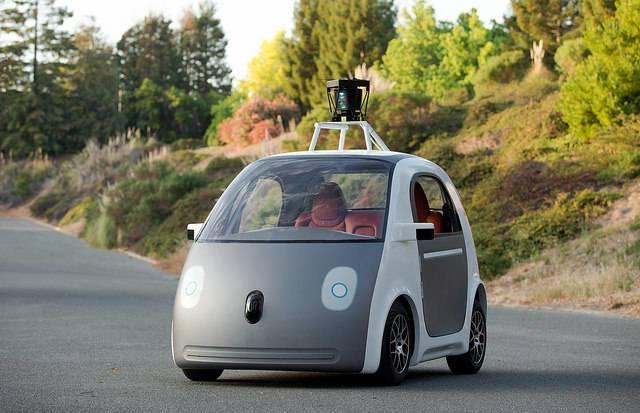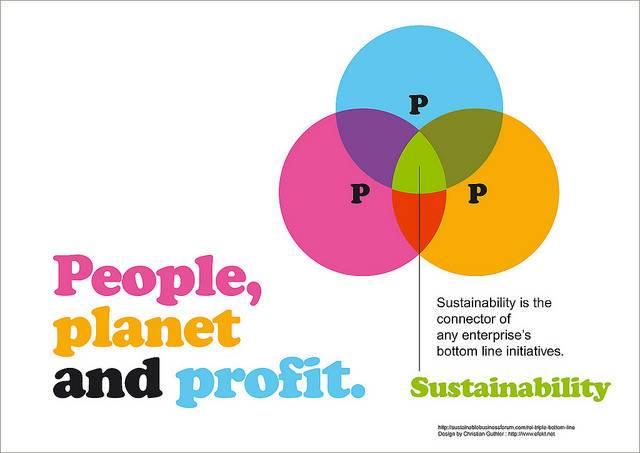Kraft Heinz Opposes Sustainability Shareholder Resolutions


Kraft Heinz Co. plans to vote on three sustainability-related shareholder resolutions at its annual meeting in Pittsburgh next month. And the company is opposed to every one of them.
Back in 2015, Kraft Foods Group merged with Heinz Co. to create one food and beverage company. The combined firm ranks as the third largest food and beverage company in North America and the fifth largest globally. In 2015, Credo Action launched a petition against the merger of Kraft and Heinz, stating that “combined, they are a threat to jobs, the environment, and affordable food." It seems the concerns of Credo Action and others were well founded.
Emissions from “food distribution, processing, retail, and food services sectors combined are projected at nearly 1 million tons of CO2,” according to a report by Climate Smart Business. In other words, the food and beverage sector in general is responsible for a lot of carbon emissions. Deforestation caused by the palm oil sector in Indonesia is a big source of carbon emissions. Indonesia is the top producer of palm oil and is the fifth largest greenhouse gas emitter. The World Resources Institute attributes most of Indonesia’s GHG emissions to “the conversion of its forests and carbon-rich peatlands” for agriculture, including oil palm cultivation.
In one of the three shareholder resolutions, Domini Impact Investments and Calvert Investment Management asked Kraft Heinz to prepare a public report on how it is assessing its "supply chain impact on deforestation and associated human rights issues, and its plans to mitigate these risks” by Nov. 1. The resolution points out that palm oil, soy, sugar, beef and paper are “used in a variety of Kraft-Heinz products.”
The company lags behind other food and beverage giants -- including Unilever, which Kraft Heinz recently expressed interest in buying -- when it comes to addressing deforestation. Both companies ranked 8th and 10th out of 10 companies in a 2015 palm oil sourcing scorecard from the Union of Concerned Scientists.
Not much has changed since then. The Rainforest Action Network (RAN) describes Kraft Heinz as “a laggard company that lacks a responsible palm oil policy.” According to RAN, the company should “adopt a globally responsible palm oil procurement policy.” Since the merger in 2015, the company has not yet adopted any policies on palm oil. RAN lists the weaknesses of the company regarding palm oil, which include:
- Not having additional requirements for suppliers to stop destroying rainforests and peatlands, and end human and labor rights abuses.
- Lacking a requirement for palm oil to be traceable to the plantation level for for suppliers to comply across their entire operations.
The other two resolutions ask for increased reporting from Kraft Heinz. An interfaith investment group asked the company to produce a comprehensive sustainability report "describing its environmental, social, and governance (ESG) performance and goals, including nutrition targets” and post it on its website by Nov. 1. The resolution acknowledges that sustainability reporting “is increasingly expected by company shareholders and stakeholders.” By issuing one, Kraft Heinz “can demonstrate its values, and can drive its practices and performance.” The resolution was filed by filed by Province of St. Joseph of the Capuchin Order (Midwest Capuchins), Sisters of the Holy Names of Jesus and Mary, US Ontario Province, Trinity Health and Mercy Investment Services.
In yet another resolution, As You Sow Foundation and Dignity Health asked Kraft Heinz to issue a report “assessing the environmental impacts of continuing to use non-recyclable brand packaging.” The filers claim a “significant amount" of the company's "brand product packaging is not recyclable.”
In a proxy memo for the resolution, the filers argue that non-recyclable packaging represents “enormous waste and inefficiency” and the use of it “suggests management inattention to design for sustainability.” They further accuse management of not recognizing the “growing scientific data linking plastic packaging to threats to marine animals and potentially to human health” by continuing to use non-recyclable packaging.
Kraft Heinz opposed both reporting resolutions as well. The company said it believes the requested policies “would not be an effective use of our company’s resources nor in the best interests of our company or our stockholders.”
The big food giant states on its website that as a “socially responsible global food company,” it is “committed to reducing our environmental footprint and protecting the planet’s natural resources for future generations.” The trouble is that the company's opposition to these three shareholder resolutions indicates the opposite.
Image credit: Flickr/CIFOR
Intel Plunges Into the Self-Driving Car Market with $15 Billion Acquisition


Yesterday, the global semiconductor giant Intel announced that it would acquire the Israel- based startup Mobileye N.V. for $15.3 billion. Founded in 1999, Mobileye has developed computer vision software it says can propel self-driving cars into the mainstream.
The value for data systems within the autonomous vehicle market will reach $70 billion by 2030, according to Intel estimates. And McKinsey projects that 15 percent of all automobiles will be fully autonomous by 2030. Last summer, Morgan Stanley estimated that the entire driverless car sector could be worth $2.6 trillion at the end of the next decade.
From Intel’s point of view, its purchase of Mobileye is necessary to compete in an emerging sector ripe with opportunities. This industry is now dominated by the global automakers and upstarts such as Tesla Motors, as well as technology and ride-sharing companies like Google and Uber. If Intel hopes to continue to placate its shareholders, the company must venture beyond the hyper-competitive and commoditized semiconductor market. Analysts have noted that Intel missed the boat when the time was right to seize opportunities within the smartphone market – and its continued strength in the personal computer and server market is not a sure long-term bet. Therefore, a forward-looking eye on the self-driving market makes sense.
But this acquisition is not without risk. Bloomberg’s Tara Lachaelle noted that when measured on an EBITDA (earnings before interest, tax, depreciation and amortization) basis, Intel just dived into one of the most expensive takeovers since the heady dot-com days around the turn of the century. Investors responded in kind. As of press time, Intel’s stock price was down 2 percent.
Nevertheless, Intel purchased one of the world's leading self-driving car technology firms, and one that can boast a track record of almost two decades.
Headquartered in Jerusalem, the company says it has at least 450 engineers working a bevy of software systems, including the LiDAR-based driving technologies that allow an autonomous car to 'see' what is on the road and eliminate the bane of commuting: human error.
As LiDAR (light detection and ranging) software evolves and proves to be more sophisticated, watch for self-driving cars to become more of a reality.
Hence the fierce competition -- and even litigation: Google, for example, recently sued Uber for patent infringement, unfair competition and the stealing of trade secrets related to autonomous cars. Tesla has also staunchly defended its turf and taken a former engineer to court for allegedly poaching employees as he launched his own self-driving car software startup.
Meanwhile, the conventional automakers are considering their own chess moves, as it makes more sense for them to develop what are currently expensive software systems in-house, rather than having to license the technology or attempt what would be a far more expensive acquisition in the future.
In early 2016, General Motors invested $500 million in Lyft as it viewed that ridesharing company as a ticket to continued viability in a rapidly evolving automobile market. And last month, Ford Motor Co. plunked $1 billion on an artificial intelligence company that in the future could be the brains behind its driverless cars.
The rise of autonomous vehicles will most likely mean fewer cars on the roads, so everyone is scrambling to snag their pieces of the pie -- and, in the meantime, creating a bubble that may burst before these next generation of cars even become a common sight on the streets.
Image credit: smoothgroover22/Flickr
Shell Begins Divestment From Canadian Oil Sands


Last week Royal Dutch Shell agreed to sell most of its Athabasca oil sands investment to a Canadian exploration company for $8.5 billion. To many, this was anything but a surprise. In 2015, the world’s second largest publicly-traded oil company put the brakes on its Pierre River development, suggesting it wasn’t the right time for Shell to enter what was at the time the largest oil sands development in Canada.
But Shell’s latest move signals a strategic shift for the company, which admits it’s been under investor pressure to address climate change impacts.
Shell’s chief executive, Ben van Beurden, said the decision to sell its share of the Athabasca development to Canadian Natural Resources comes after careful thought about the sustainability of the carbon fuel market and Shell’s economic future.
"We have to acknowledge that oil demand will peak and it could already be in the next decade,” van Beurden told the CERAWeek energy forum in Houston, Texas, last week. He said the public response to high-carbon emissions development is just as significant.
“Social acceptance is just disappearing,” Beurden said, acknowledging that the company is under significant scrutiny and pressure to make sound environmental decisions, an offshoot of eroding public trust. “[It] is becoming a serious issue for our long-term future."
His viewpoint isn’t shared by everyone, however. Saudi Arabia’s energy minister, Kahlid al-Falih, reportedly called the comment dangerous -- warning that it could scare off investors before other energy alternatives are fully in play. Other companies, like Chevron, called the analysis premature.
In its home city of Calgary, Canadian Natural's purchase is being called a “steal” of an opportunity by analysts. Its 70 percent stock in Athabasca, which also includes the purchase of some of the assets from Marathon Oil (a total of $12.7 billion), is projected to shoot the company’s output to more than 1 million barrels a day. In a province that now commands the highest unemployment rate in Canada, the news has made Canadian Natural a kind of folk hero. Only 17 public companies in the world currently maintain that rate of output, and most are located in the Middle East.
But the company may still have an uphill climb make the deal a success. On Monday debt rater DBRS put Canadian Natural under review. While the rater "notes that the acquisition further strengthens and broadens [Canadian Natural’s] position as a top-tier producer and developer of oil sands in Canada,” DBRS said. But it could still impose a negative rating action “if the pricing outlook and/or debt repayments are significantly lower than currently expected and the recovery of the key credit metrics is pushed materially beyond 2018.”
For Shell, the sale opens the door to further developing its renewable energy investments and its interest in natural gas in the highly competitive Texas Permian Basin development. The company feels this energy sector affords opportunities and can be better managed. On Thursday, it announced that 10 percent of directors’ bonuses will now be linked to how they manage greenhouse gases in their respective operations.
It’s clearly meant as a long-range forecast as Shell moves to divest itself of about $30 billion in assets acquired when it merged with BG Group last year and position itself as a hopeful leader in renewable energy development.
Image credit: Flickr/Shell
Trump Will Continue Obama's Biggest Environmental Mistake: More Drilling


For all of former U.S. President Barack Obama's positive moves on clean energy and environmental protection, one glaring black mark remains on his record: He oversaw a huge expansion in domestic oil drilling. Unfortunately, this is the only part of his legacy that incoming President Donald Trump wants to keep intact.
While Obama's support for renewables and stricter regulations on dirty power plants is one reason that U.S. greenhouse gas emissions dropped during his presidency, many say not enough was done to keep fossil fuels in the ground. Even the 2010 Deepwater Horizon disaster – from which the Gulf Coast is still recovering -- did not dent drilling under Obama.
Oil production, which had been falling since the 1970s, grew under an astounding 72 percent during the Obama years. That is 3.6 million extra barrels a day from a president who promised to shift us to more environmentally-friendly policies. In 2013, the U.S. even became the world's leading oil and gas producer. Remember how Republicans used to always call for energy independence? Under Obama, we got closer to that goal than ever before.
While the end of Obama's second term saw some positive shifts – such as the banning of drilling in the Arctic and in wide swaths of the Eastern seaboard -- it was, to many, too little too late. And Obama-era legislation left plenty of areas open for drilling, and that's just what Trump plans to do.
Environmental groups seem to agree that Trump's policies are, on the whole, a lot worse that Obama's. Not surprisingly, the incoming president wants to take little from Obama's policies promoting clean energy and restricting emissions from coal power plants. But he does want to keep in place the previous administration's moves to expand offshore drilling – and environmentalists are not happy.
“Bottom line, we think this is a terrible idea, whether it was done by the Obama administration or the Trump administration,” Athan Manuel, director of the Sierra Club’s Lands Protection Program, told the Washington Post. “It’s time to keep oil in the ground."
We live in a reality where oil company press releases = presidential press releases. ExxonMobil already plans to invest $20 billion in the Gulf, while its former CEO begins his duties as secretary of state.
To many our only hope is that the predictions, becoming more and more plentiful, that oil will soon follow the trend of big coal are true. Coal also saw a rush to invest and build new power plants during the President George W. Bush era, when overseas demand from emerging economies in Asia seemed limitless. Yet, coal has seen its usage collapse in the United States and abroad and prices tumble. Let's hope petrol follows the same path, because the last thing the world needs is more oil.
Image credit: Bernado via Wikimedia Commons
Vancouver Aims for Zero Carbon by 2030


Last year Vancouver, Canada, became the first major city in North America to target zero carbon emissions by 2030. The goal includes plans to make all new buildings emission-free by 2030 -- meaning ultra-energy-efficient new buildings will soon be common in Vancouver.
In Vancouver, 56 percent of greenhouse gas emissions come from buildings. Space heating and hot water heating cause significant carbon emissions.
"This plan is more than just about reducing our carbon pollution in Vancouver," says Sadhu Johnston, Vancouver city manager. "This is about building better-quality homes for the people who live in Vancouver. It's ambitious, yet achievable, and will benefit everyone as we work toward our greenest city, renewable city, and healthy city goals."
Vancouver's carbon-reduction targets require new buildings to:
- Meet a zero-emissions building standard such as the Passive House standard
- Tap into a neighborhood energy utility to increase consumption of renewable energy
Passive House standard grows in popularity
Passive House is a rigorous international standard for energy efficiency that that reduces energy use for heating and cooling by 80 percent. This standard has grown in popularity recently. Vancouver is a hotbed, with 600 Passive House projects completed or on the books. One of the most notable projects, The Heights, is located in the East Hastings corridor of Vancouver Heights; it will soon be the largest Passive House certified project in Canada.Canada shattered records for the quantity of Passive House certified projects last year, according to the report Accelerating Market Transformation for High-Performance Building Enclosures by the Pembina Institute. Larger-scale projects such as The Heights are more common than ever before, encouraging innovation in larger-scale, ultra-energy-efficient construction.
“The number of Passive House units in North America has quadrupled in the last year, from 500 to over 2,000 units. And a quarter of these are in Vancouver alone,” says Dylan Heerema, an analyst for the Pembina Institute. “As industry capacity develops and more builders get on board, we can expect the added cost of building to near-zero emission standards to fall or even disappear. Factor in lower bills for energy and maintenance, and green buildings will increasingly become an affordable housing option.”
Energy-saving building retrofits
“Emission-reductions targets by cities will also help encourage energy-efficiency retrofits that save energy and increase comfort,” says John Rockwell, a technical sales engineer for Zehnder America. Zehnder manufactures the most efficient heat recovery ventilation units on the market and recently introduced the ComfoAir 70, a ventilation solution designed for retrofitting apartments and small homes.Super energy-efficient retrofits and new construction projects need mechanical ventilation systems to promote indoor air quality and provide fresh air. Many Passive House certified projects feature Zehnder heat recovery ventilators to supply a continuous stream of fresh, filtered air throughout the project; the ventilators transfer heat from the exhaust air to the intake air, saving energy. Zehnder heat recovery ventilators are certified Passive House components and are used in many projects, including the Heights.
As carbon-emission goals and stricter building codes promote ultra-energy-efficient buildings, high-performance solutions are paving the way to greater energy savings and comfort. These projects are reducing operating costs and cutting greenhouse gas emissions, for a cleaner environment.
Image credit: Flickr/Randal Schwartz
Blackbaud: Community Engagement is 'Fundamental to Business Success'


By Heidi Travis
Yearning to feel connected within your workplace? Wouldn't you love to work at a place where over 80 percent of employees volunteer for social good? At SXSW's Social Good Hub, one corporate sponsor plans to demonstrate that both employee and community engagement are fundamental to a successful business.
This week, I was able to grab a quick interview with upcoming SXSW conference speaker, Rachel Hutchisson, the VP for corporate citizenship and philanthropy for Charleston-based, socially progressive company Blackbaud. After 25 years of involvement in changes and growth with Blackbaud, Hutchisson is delighted to work in a role where she pursues social good. And she says the company -- which offers software and fundraising services to nonprofits -- often builds its programs by engaging employees, funding community projects, and creating a business that allows people to make a living by working to support nonprofits.
Below are three ways in which Blackbaud builds a triple bottom line:
Encouraging volunteerism: Numerous studies and focus groups prove that engaged employees stay longer and are more productive. Part of giving back empowers employees to feel equally involved with workplace and community. One of the ways Blackbaud encourages volunteerism is by offering the incentive of three paid days off after completion of volunteer service hours. Hutchisson said the company hosts over 150 team0building, volunteer-based events early.
She also described how many Charleston office employees are involved in the community. This interaction results in a culture where the majority of employees volunteer outside of work. This includes staff who serve on boards and work on grassroots projects, as well as more than 1,000 employees involved in community volunteering. During their last staff engagement survey, 86 percent of employees agreed that the company’s philanthropic work shapes stronger interactions among employees, attracts better candidates, and improves staff retention.
Community engagement through grantmaking: Hutchisson says Blackbaud began funding grant programs in the '90s, initially through the Coastal Community Foundation in Charleston. Its intent was “to create a vehicle to give back to the community” by awarding grants and scholarships for education.
In addition, Blackbaud developed its own grant program offerings. Hutchisson shared that the experience of awarding grants and getting to know each organization is meaningful for all involved. When asked how organizations find out about grant opportunities, she said employees are their greatest “community connectors” and it’s their relationships that help identify programs in need.
By offering grants to assist in community program development, which employees can also individually apply for, they’re connecting employees and the community in meaningful ways.
“We should all feel really empowered to create change,” Hutchisson of Blackbaud says.Managing environmental impact: Similar to its own services for nonprofit fundraising, there are many certifications and tools to help companies on the path to environmental stewardship.
Blackbaud uses two tools to measure eco-consciousness. On the local level, the company participates in Charleston’s Green Business Challenge, while nationally, it makes use of Boston College’s Corporate Citizenship Tool.
Taking advantage of these types of programs isn’t always a deep dive into transparent environmental stewardship. But these programs provide a great way to introduce measures on how the company is doing, compare progress with its peers, and raise awareness about environmental goals. Blackbaud is also building a new environmentally--improved campus while keeping in mind energy and environmental features like:
- Integrating solar and green roofs
- Reusing site wood
- Making use of xeroscaping and native landscaping
- Saving energy with LED lighting, working to improve waste management and recycling
- Providing convenient electric car plug-in stations
Blackbaud started as a small entrepreneurial organization with fewer than 100 staff and grew to over 3,000 employees to date. To measure industry success, the company also offers a yearly ‘charitable giving report’ discussing changes in fundraising trends.
The great thing about advances in technology-based software services is that metrics are built within the system. In this case, the technology offered to customers include fundraising scorecards which show how outcomes are measured and advice offered. Growth is proof of success in both the nonprofit sector and by the ability of Blackbaud to commit staff and resources to offer community funding as part of their business model.
When asked what she’d like you to envision after attending the Social Good Hub this weekend, Hutchisson says she hopes you’ll be inspired by her experiences and think about the idea that:
“Individual action does matter and every individual person can be a change agent.”Image credit: Flickr/Christian Guthier
Heidi Travis is a full-time planner, designer, and lover of being active in the beautiful outdoors. Heidi recently made a move to discover everything Austin has to offer after growing up in Atlanta, enjoying life in the mountains of Asheville, and appreciating the convenience of living in a city like Philadelphia. While in Philadelphia, she earned her Masters in Environmental Studies at Penn and enjoyed biking to work, as well as being involved in many campus sustainability projects. You can follow her on twitter @heidi_travis15
2016: Another Monumental Year for Clean Energy
The latest Sustainable Energy in America Report from Bloomberg New Energy Finance (BNEF) shows that the march toward a renewable energy future continues, unabated.
BNEF presents several positive and encouraging pieces of information in its report, stating that the “rapid pace of renewable energy deployment accelerated ... and and the economy grew more energy efficient than ever.” BNEF and its research partners found that not only did renewables installations grow, but energy prices also dropped. (Remember when the fossil fuel industry argued that renewables would increase consumer energy prices?). Energy-efficiency also rates increased.
Moreover, researchers say that GDP growth and energy demand are officially decoupled. Energy consumption is decreasing but GDP is rising, mostly due to efficiency and cheaper renewables and natural gas.
The renewable energy generating capacity added in 2016 was nearly double that of natural gas – 76 gigawatts (GW) versus 39 GW. This is the latest bit of data that flies against the conventional wisdom that the reason we've seen such a shift away from coal is due to cheap natural gas. Yes, it played a role, but renewables did too and are now the fastest-growing electricity sector.
The report was not all good news, though. BNEF found an increase in both total gas production and, especially concerning, shale gas production -- which surged 79 percent percent. The tar-sands-like extraction process is an environmentalist's nightmare.
This shows that we need to shift focus. The electricity sector, once the chief source of U.S. greenhouse gas emissions, has seen a remarkable shift toward greater sustainability. Unfortunately, the other chief source of emissions -- transportation -- remains mired in a dirty fuel system and reliant on gasoline and diesel.
Cheap gas only means that more people are driving more – vehicle miles traveled hit a record high last year. While there are more and more electric cars for sale, they still only account for a tiny fraction of sales and are, unfortunately, seeing their impact diluted by the increased sales of large, gas-guzzling SUVs and trucks.
From the report:
"The return to less fuel efficient vehicles and low gasoline prices have resulted in two consecutive years of rising gasoline consumption. In 2016, sales of gasoline rose 3.3 percent to 136 billion gallons, only 1.5 percent below the all-time peak achieved in 2005 and 7.1 percent above the recent trough achieved in 2012."
Meanwhile, investment in other forms of sustainable transportation, such as efficient mass-transit systems, remains in limbo due to the new administration in Washington. The Department of Transportation recently withheld of funds for Caltrain electrification in the San Francisco Bay Area – a project that would have widespread positive mobility and sustainability impacts – worrying many in the region and beyond.
Still, there is much to be optimistic about. We're heading in the right direction. Now we just need to focus, bring more renewables online faster, and target greening the transportation sector just as we have, successfully, shifted the electricity sector from dirty fossil fuels toward clean, affordable renewables.
Image credit: Max Pixel
Life Beyond Lithium-Ion: New 'Glass Battery' Promises Longer EV Range


Rechargeable lithium-ion batteries have been a main driver of the clean power revolution, especially in the fields of electric vehicles and storage for wind and solar energy. The clean power trend could rev up even faster, if a new energy storage technology under development at the University of Texas, Austin, finds its way to the marketplace.
The so-called "glass battery" research does not have the benefit of federal or state funding, so the next phase of development is going to require a helpful nudge from private-sector investors.
Energy storage genius at work: There he goes again
The new research project is due in part to the work of John Goodenough of UT's Cockrell School of Engineering. As a co-inventor of lithium-ion technology, Goodenough is a legend in the energy storage field.
It would be an ironic twist of fate if the new technology eventually supplants Li-ion in the marketplace, but that doesn't seem to bother Goodenough.
Even a game-changing invention like lithium-ion energy storage still has room for improvement. Here's Goodenough throwing shade, as cited by the UT news office:
“Cost, safety, energy density, rates of charge and discharge and cycle life are critical for battery-driven cars to be more widely adopted. We believe our discovery solves many of the problems that are inherent in today’s batteries,” Goodenough said.
A better battery for electric vehicles
Goodenough worked with research fellow Maria Helena Braga to develop the new battery.
The problem that the new battery solves is related to the formation of dendrites. These are the tiny metal whiskers that can form when a conventional lithium-ion battery is charged too quickly. Dendrites have been linked to shorter battery lifespan, fires or even explosions.
To prevent dendrites from forming, Goodenough and Braga replaced the liquid electrolyte in a conventional lithium-ion battery with glass.
That switch-up enabled researchers to use a new anode (that's the negative) that is not susceptible to dendrites.
When the team put their battery to the test, the result was a longer lifespan.
The new battery also had greater energy than a conventional lithium-ion battery, meaning an electric vehicle with a "glass battery" would charge more quickly and go more miles than one with an ordinary lithium-ion battery.
In another key improvement, Goodenough and Braga anticipate that the battery could operate efficiently in subzero temperatures.
Life beyond lithium-ion ...
Performance improvements are just one aspect of the new energy storage technology.
In commercial production, the glass battery would be less complicated and expensive to manufacture than conventional lithium-ion batteries.
In fact, the battery could be made with sodium instead of lithium.
Braga points out that sodium -- aka salt -- is an abundant resource that could be extracted from seawater.
A new market for sodium could turn out to be a significant development for desalination operations. Even with the advent of low cost renewable energy, desalination is expensive. The bottom line would benefit if operators could partly offset costs by marketing recovered sodium to EV battery manufacturers.
The availability of an abundant domestic resource in the EV supply chain is also an important consideration for national security planners. The U.S. has only one functioning lithium operation.
So far, the research has not garnered federal grant money, but UT-Austin does have a technology transfer program that hooks up academic research with investors for commercial development, so stay tuned for that.
... and a shout-out for the free flow of ideas
In consideration of the anxiety and upheaval resulting from the Donald Trump administration's travel and immigration policies, it's worth noting that the new energy storage breakthrough was made possible by scientific collaboration across international borders.
Braga first began working on glass electrolytes with a research team at the University of Porto in Portugal.
Here's a snippet from her bio that demonstrates the skill set she brought to UT-Austin:
"Her main interests include experimental characterization and computational modeling of materials' properties, namely batteries' materials and metal hydrides."The experimental techniques include synthesis and characterization by means of neutron and x-ray scattering (spectroscopy and diffraction), performing Rietveld refinement and pair distribution function (PDF) and other characterization techniques like ionic and electrical conductivity measurements, differential scanning calorimetry (DSC), scanning electron microscopy (SEM), electron probe microanalysis (EPMA), etc."
Braga's collaboration with Goodenough began about two years ago. She credits him with foundational insights leading to a patent for the new battery.
Image credits: Anton Darius and Deva Darshan
U.S. Energy Dept. Touts New 'Solar Fuel' Catalysts for the Hydrogen Economy


Don't start running over to the Molecular Foundry all at once, but if you're in the market for a good way to turn water into solar fuel, they have something for you. The Molecular Foundry is part of an Energy Department research team that has come up with 12 new materials that can harness the power of sunlight to produce renewable hydrogen from water.
Hydrogen economy, here we come
The new research is yet another demonstration that the dream of a hydrogen economy is finally bidding farewell to the land of Morpheus and planting its feet firmly in the real world.
That dream languished for many decades and it reappeared all but a few years ago. That's partly due to the global warming factor. Hydrogen is a zero-emission fuel in terms of direct greenhouse gas contributions, but conventional hydrogen production relies heavily on natural gas. In other words, conventional hydrogen is a sustainability non-starter in today's world.
Deploying solar energy to "split" water pushes that obstacle aside.
Along with Japan, German and Europe, the U.S. has accelerated its hydrogen activities. With a heavy dose of renewable energy, the aim is "deep decarbonization."
In the waning months of the Barack Obama administration, the Energy Department committed a new round of $30 million in support of foundational research.
Last fall the Energy Department also ramped up its water-splitting initiatives by linking six national laboratories in an initiative called HydroGEN.
Just one day before incoming President Donald Trump was honored with a modestly sized but enthusiastic crowd at his inauguration ceremony, the Energy Department also awarded a $1 million prize to the developers of a compact hydrogen fuel station called SimpleFuel.
12 more catalysts for solar-powered hydrogen production
While the Energy Department awaits word on steep budget cuts under the Trump administration, renewable hydrogen research that's already in the pipeline continues to bubble out.
The latest development illustrates the degree of collaboration involved in pushing the hydrogen economy into sustainable territory.
The new hydrogen research comes under the header of the Energy Department's Lawrence Berkeley National Laboratory, in partnership with the the Joint Center for Artificial Photosynthesis (spearheaded by the California Institute of Technology), with an assist from the colorfully named Molecular Foundry and the National Energy Research Scientific Computing Center.
The research team tackled a renewable hydrogen bottleneck involving the catalyst that is needed to split water.
There are only 16 known "photoanode" materials that can jumpstart the chemical reaction that produces hydrogen from water.
According to Berkeley Lab, researchers spent 40 years developing that stable of 16.
In just two years, the Berkeley team almost doubled that number with the addition of 12 new photoanodes.
Their work is described in the paper, Solar fuels photoanode materials discovery by integrating high-throughput theory and experiment," published in the online journal of the Proceedings of the National Academy of Sciences.
The team essentially revved up the "cumbersome" trial-and-error process of previous generations to high speed, by adding a heavy dose of data mining (that's where the National Energy Research Scientific Computing Center came in):
"The scientists combined computational and experimental approaches by first mining a materials database for potentially useful compounds, and then rapidly test the most promising candidates using high-throughput experimentation."
The search was narrowed down to group of 174 metal compounds called vanadates, which contain vanadium, oxygen and another element. That third element is the key to identifying the new photoanodes:
"The research reveals how different choices for this third element can produce materials with different properties, and reveals how to 'tune' those properties to make a better photoanode."
The addition of the 12 new photoanodes helps to widen the sustainable hydrogen supply chain, enhancing opportunities for cost efficiency.
Meanwhile, the business sector is not waiting around for the research to make its way out of the lab and into commercial development.
Toyota is among the companies already developing solar-powered hydrogen production for fuel cell electric vehicles, and here in the U.S. the startup Nikola is working with Ryder on a network of solar fueling stations for fuel cell trucks.
Image (cropped); Photoanode materials by CalTech via Lawrence Berkeley National Laboratory.
The World’s Leading Companies on Human Rights


It is difficult to gauge which multinational companies are leaders and laggards when it comes to human rights. But a report issued today makes an attempt.
The study, a shared effort by Aviva Investors, the United Kingdom NGO Business and Human Rights Resource Center (BHRRC), and several other nonprofits and European governments, looks at some of the world’s best-known and largest companies in an attempt to give a snapshot of their human rights performance. The report’s authors say they aim to catalyze a discussion between these firms and their shareholders.
But don’t expect many companies to tout the results of this survey, the Corporate Human Rights Benchmark (CHRB), any time soon.
The report has some surprises, especially to some companies that landed on “best places to work” rankings over the years. The average score was 28.7 percent. Only three companies scored higher than 60 percent.
The report's authors acknowledge that developing a strong human rights policy can take time. Furthermore, complicated supply chains mean that companies do not always have control over what can happen during the journey a product takes before it arrives in the market. Nevertheless, there is much work ahead, says the chair of the CHRB.
“There is clearly no perfect company or industry in human rights terms,” Steve Waygood, chief responsible business officer of Aviva Investments, wrote in the study’s introduction. “However, it is clear that some are trying much harder than others.”
The report scores companies on six overall indicators (as shown above). Companies’ human rights practices and their responses to human rights abuse allegations were given higher weightings. In addition, the researchers surveyed these firms’ overall corporate governance, transparency and remedies to address any human rights grievances.
Researchers evaluated companies in three sectors that are often linked to human rights violations: fashion and apparel, food and agriculture, and the mining and extractive industries.
One clear leader, as mentioned throughout the study, was Marks and Spencer (M&S). The U.K. retail giant -- which, according to its most recent annual report, actually generates more revenue from food sales than clothing -- stands out among its peers within both the apparel and food industries.
The company made high marks by frankly and openly discussing human rights challenges across its supply chain at the board of directors’ level, outlining a clear commitment to combatting such abuses, and putting incentives in place so that executives and managers will actually treat these problems seriously. The department store chain also scored big for implementing explicit policies that prohibit retaliation against anyone who files a human rights-related complaint against the company or one of its suppliers.
Ranking slightly behind M&S were H&M and Adidas. H&M, which recently announced that it would push its suppliers to pay workers digitally instead of with cash, was one example of a company that maps out and discloses its supply chain publicly. The fast-fashion giant also said it is in discussion with suppliers about living wage guidelines (though no company in this survey provided an public example of how it is doing so).
The German athletic outfitter Adidas is one company BHRRC has called out in the past for taking an active approach to stamp out forced labor from its supply chain. This new report calls out the company for being one of the few to not only have a strong human rights commitment, but to also implement effective monitoring across its supplier base as well.
Clothing retailers, however, were often laggards in this survey. One example is Costco, which as a sterling reputation here in the U.S. for how it treats its employees, both with wages and healthcare benefits. But among its peers in both food and apparel, the big-box chain scored little more than a big goose egg. As is the case with other low-scorers mentioned in this survey, the CHRB found a clear correlation between the lack of public commitments and the company's overall human rights performance.
The American retail chains Macy’s and Kohl’s rounded out the list of apparel companies with weak or non-existent human rights guidelines.
When evaluating global food companies, Unilever and Nestlé are just a few steps behind M&S. This may come as a surprise to critics of those companies’ performance on the human rights front. But again, the key here is transparency. Unilever was one of a handful of companies cited for aggressive tracking of human rights risks; Nestlé stood out for monitoring and tracking such abuses.
On the other hand, the CHRB report did not look kindly on fast-food companies. McDonald’s and Yum! Brands were singled out for accomplishing practically nothing on human rights disclosures and actions. Considering the recent evidence suggesting that deforestation is on the upswing, and the links that the global meat industry has to the loss of forests impacts’ on human rights and local communities, these companies are at considerable risk of harming their already shaky brand reputations if they do not start more corrective action.
Finally, the extractives industry has never had much of a reputation of respecting human rights and local communities, but the CHRB’s authors indicate that this sector is in the midst of a turnaround.
BHP Billilton, the US$46 billion Anglo-Australian mining and oil behemoth, won high points across the board. The company is one of the few multinationals, along with fellow extractives companies Rio Tinto and Total, that have frameworks in place for engaging stakeholders by explaining the potential impact of their operations and products. And in the event a human rights complaint is logged against the company, BHP Billiton discloses how those cases are accelerated if necessary.
Rio Tinto and Total were also noted as exemplar companies overall on human rights issues.
As for state-owned companies, their public ownership did not necessarily translate into pubic transparency. Extractive giants China Petroleum and Chemical, along with India’s Oil and Natural Gas Corp., were lodged at the bottom of these rankings.
Image credit: Elliott Brown/Flickr